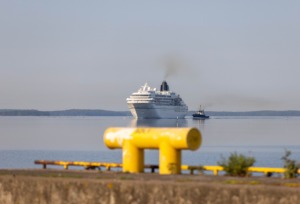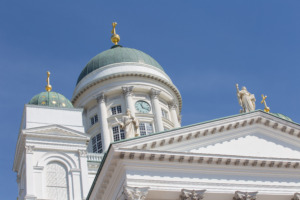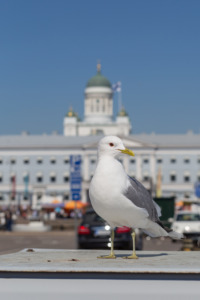
How to get the best out of your experience in Helsinki
Exploring the Natural Beauty of Helsinki Helsinki, the capital of Finland, is a city that seamlessly blends urban sophistication with stunning natural landscapes.
Read more
Helsinki, the vibrant capital of Finland, has a rich history that dates back to its founding in 1550 by King Gustav I of Sweden. Initially established as a trading town to rival the Hanseatic city of Reval (now Tallinn), Helsinki struggled to grow due to its remote location and competition from other Baltic ports. However, the city’s fortunes began to change in the early 19th century.
In 1809, Finland was ceded to Russia, and in 1812, Tsar Alexander I moved the Finnish capital from Turku to Helsinki. This strategic move was intended to reduce Swedish influence and bring the administration closer to St. Petersburg. The transformation of Helsinki into a capital city marked the beginning of its rapid development. The city was redesigned by German architect Carl Ludvig Engel, who created a neoclassical city center that remains a hallmark of Helsinki’s architectural heritage.
Visitors today can explore the Senate Square, a prime example of Engel’s work, which is dominated by the Helsinki Cathedral, the Government Palace, and the main building of the University of Helsinki. The square is a testament to the city’s transformation from a modest trading post to a bustling capital.
The 20th century was a period of significant growth and modernization for Helsinki. The city hosted the 1952 Summer Olympics, which brought international attention and spurred the development of infrastructure and public facilities. The Helsinki Olympic Stadium, built in 1938, remains a prominent landmark and a venue for sporting events and concerts. The stadium’s tower offers panoramic views of the city, providing a glimpse into Helsinki’s urban landscape.
Another notable development was the construction of the Central Railway Station, designed by Eliel Saarinen. Completed in 1919, the station is considered one of the most beautiful railway stations in the world and serves as a major transportation hub. Its distinctive clock tower and granite facade are iconic features of Helsinki’s cityscape.
Helsinki’s commitment to modernization is also evident in its public transportation system, which includes trams, buses, commuter trains, and a metro. The city’s efficient and reliable public transport makes it easy for visitors to explore its many attractions, from the historic Suomenlinna sea fortress to the contemporary Oodi Central Library.
Helsinki is a city where the past and present coexist harmoniously. The Amos Rex art museum, for example, is a modern cultural venue that blends contemporary architecture with historical elements. Opened in 2018, the museum features underground exhibition spaces beneath the Lasipalatsi building, a functionalist structure from the 1930s. Amos Rex is a hub for art and urban culture, offering a dynamic space for exhibitions and events.
Another architectural gem is the Temppeliaukio Church, also known as the Rock Church. Carved directly into solid rock, this unique Lutheran church is renowned for its stunning acoustics and serves as a popular concert venue. Its copper dome and natural rock walls create a serene and awe-inspiring atmosphere.
For those interested in Helsinki’s literary and educational heritage, the Kaisa House, the main library of the University of Helsinki, is a must-visit. This award-winning building, with its curvilinear brick facade, is a striking example of modern library architecture. It provides a tranquil space for reading and research, as well as a cafe for relaxation.
Helsinki’s cultural landscape is further enriched by its vibrant public saunas, such as Löyly in the Hernesaari district. This complex includes traditional Finnish smoke saunas and wood-heated saunas, offering visitors a quintessential Finnish experience. The saunas are complemented by a restaurant that emphasizes ecological and locally produced ingredients, making it a perfect spot to unwind and enjoy the local cuisine.
In conclusion, Helsinki’s history is a fascinating journey from its humble beginnings to its current status as a dynamic and modern capital. With its rich architectural heritage, cultural landmarks, and efficient public transportation, Helsinki offers a unique blend of history and contemporary living. Whether you’re exploring the neoclassical buildings of the Senate Square or enjoying a relaxing sauna session at Löyly, Helsinki promises an unforgettable experience.
For those looking to delve deeper into Helsinki’s history and culture, LSS – Long Special Services offers expertly curated tours and travel packages. With decades of experience and a passion for showcasing the best of Finland, LSS ensures that every visitor leaves with lasting memories of this remarkable city.

Exploring the Natural Beauty of Helsinki Helsinki, the capital of Finland, is a city that seamlessly blends urban sophistication with stunning natural landscapes.
Read more
Discover the Beauty of Helsinki Helsinki, the vibrant capital of Finland, is a city that effortlessly blends modernity with rich history.
Read moreIntroduction to LSS: Your Local Guide in Helsinki When it comes to exploring Helsinki like a local, LSS - Long Special Services is your go-to guide.
Read more